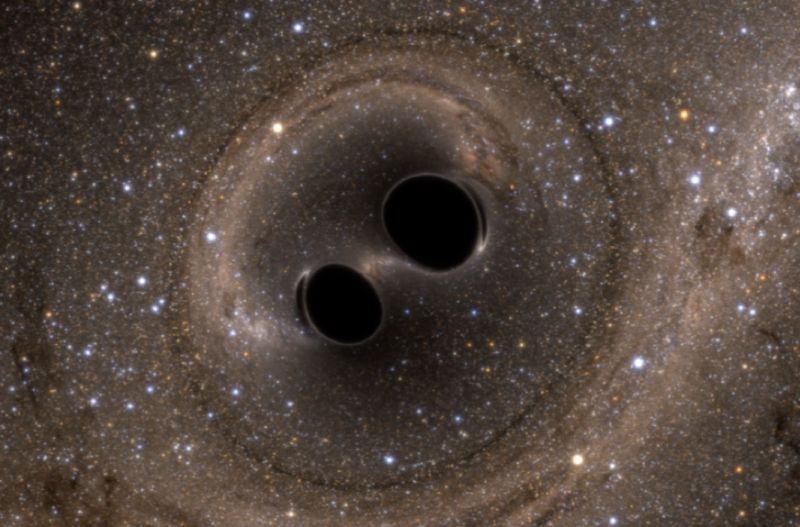Fresh analysis of LIGO data supports “no hair” theorem for black holes

Enlarge / Simulated image of two merging black holes detected by LIGO, viewed face-on. (credit: SXS Lensing)
Physicists have "heard" the telltale ring of an infant back hole for the first time, thanks to a fresh analysis of LIGO data. Researchers specifically looked for telltale "overtones" in the data from the collaboration's Nobel Prize-winning detection of two black holes merging. Not only were the overtones present, but the pattern of pitch and decay matches predictions for the black hole's mass and spin derived using the general theory of relativity. According to a new paper in Physical Review Letters, the result also supports the so-called "no hair" theorem for the classical description of black holes.
That classical picture of a black hole is a circle with a dot at the center. The circumference of the circle is the event horizon, and the dot is the singularity. General relativity holds that the area of the event horizon is a vacuum with no structure. That's because any dust, gas, or elementary particle placed at the horizon should fall into the black hole, maintaining the vacuum state. There would be no noticeable change if you threw something into a black hole-nothing that would provide a clue as to what that object might have been. It was the late physicist John Wheeler who coined the colorful description, "Black holes have no hair." (Wheeler had a knack for catchy names and phrases.) So all you need to describe black holes mathematically is their mass and their spin, plus their electric charge.
"We all expect general relativity to be correct, but this is the first time we have confirmed it in this way," said lead author Maximiliano Isi of MIT. "This is the first experimental measurement that succeeds in directly testing the no-hair theorem. It doesn't mean black holes couldn't have hair. It means the picture of black holes with no hair lives for one more day."
Read 16 remaining paragraphs | Comments